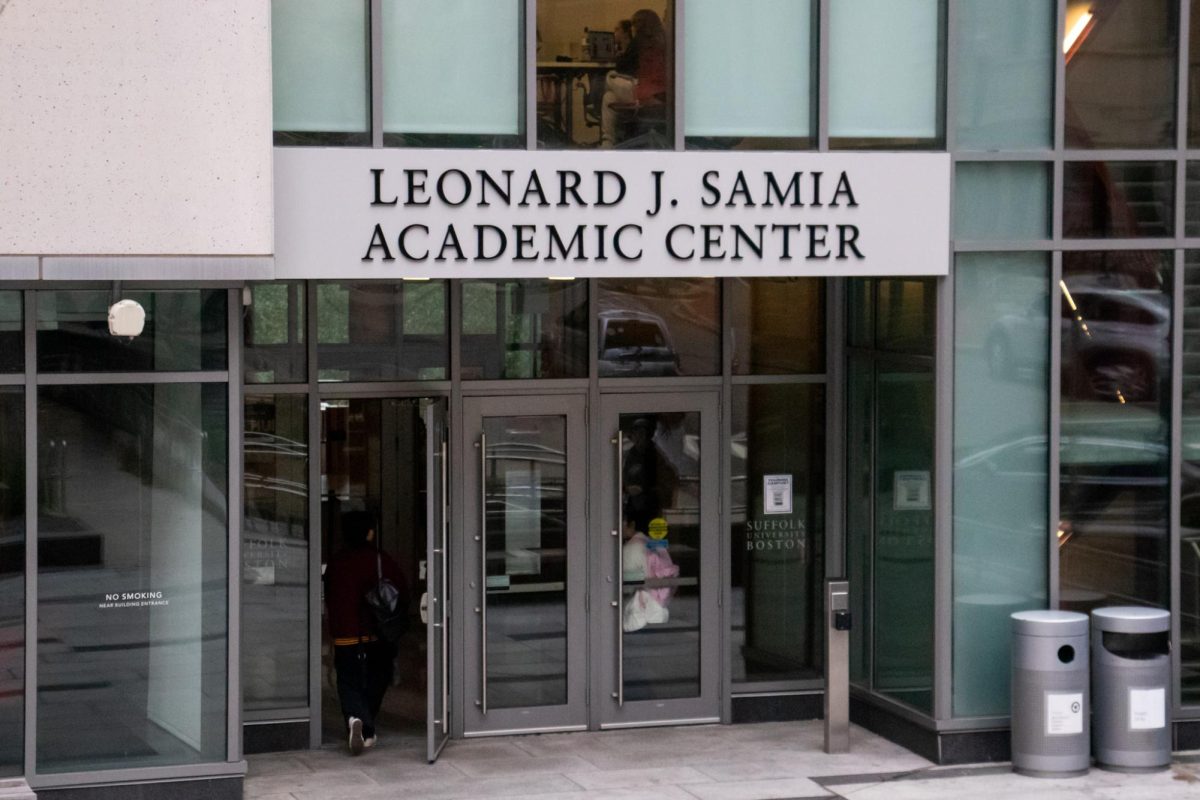
If Suffolk University’s Board of Trustees votes to arm the Suffolk University Police Department, the Board will undermine the very security it hopes to bring to campus. To create the welcoming and educational environment that the university claims to support, Suffolk must not arm its police officers.
Due to its location, Suffolk is already surrounded by police. In addition to SUPD, the Boston Police, MBTA Transit Police and Massachusetts State Police all patrol the area immediately surrounding Suffolk’s campus. In the case of the threat of extreme violence, such as an active shooter on campus, Suffolk is positioned exceptionally well for a large police response.
What students need isn’t an additional reminder of the violence and terror of guns. SUPD must be transparent in its communications with students and the current safety procedures in place to protect the Suffolk community. Students deserve to go to school without feeling unsafe or threatened by the presence of guns.
Across the United States, police kill more than 1,000 people every year. However, this violence affects people of color at a disproportionate rate. Compared to white people, Black people are nearly three times more likely to be shot and killed by police. Proposals to arm SUPD ignore the historic and ongoing violence perpetrated by police all over the U.S.
Suffolk strives to be a champion of diversity, equity and inclusion in the Boston community, yet this proposed decision ignores the lived experiences and generational trauma of its students of color.
Due to ongoing police violence, trust in law enforcement is at an all-time low. A 2022 Gallup poll found that only 45% of people have confidence in the police, the lowest number since Gallup began tracking trust in major institutions in the 1970s.
SUPD’s primary job is to keep the student body safe on campus. As SUPD’s mission statement says, “The mission of the Suffolk University Police and Security Department is to provide a safe and secure environment that enhances the educational mission of the university.”
By introducing the threat of violence, the university is shifting the power dynamic between students and SUPD. Introducing guns breeds distrust and anxiety, which threatens to create an unsafe community where some students don’t feel comfortable seeking help in an emergency situation.
Distrust in police means communities are less likely to engage with officers, even when they need help. According to a Harvard Kennedy School report, 911 calls drastically decreased nationwide after the 2020 murder of George Floyd. Researchers concluded that individuals were much less likely to contact emergency services when they feared that the police might respond with violence.
Advocates of arming SUPD argue that it’s necessary for campus safety, yet ignore the importance of trust. If students don’t feel safe asking SUPD for help, they will not call when necessary.
The push to arm SUPD ignores the research on police violence and the rising concerns of the Suffolk community. The Suffolk Journal agrees that campus safety should be the number one priority of SUPD, but introducing guns hinders the ability to achieve that. If the goal is to increase safety at Suffolk, SUPD and the Board of Trustees should focus on gaining students’ trust. SUPD needs to prioritize working with the community and building a culture of safety.
The prospect of arming SUPD is an issue that affects every person on campus. Students, faculty and staff must advocate for what they feel would make the Suffolk community the safest; and the Board must take these perspectives to heart.



















